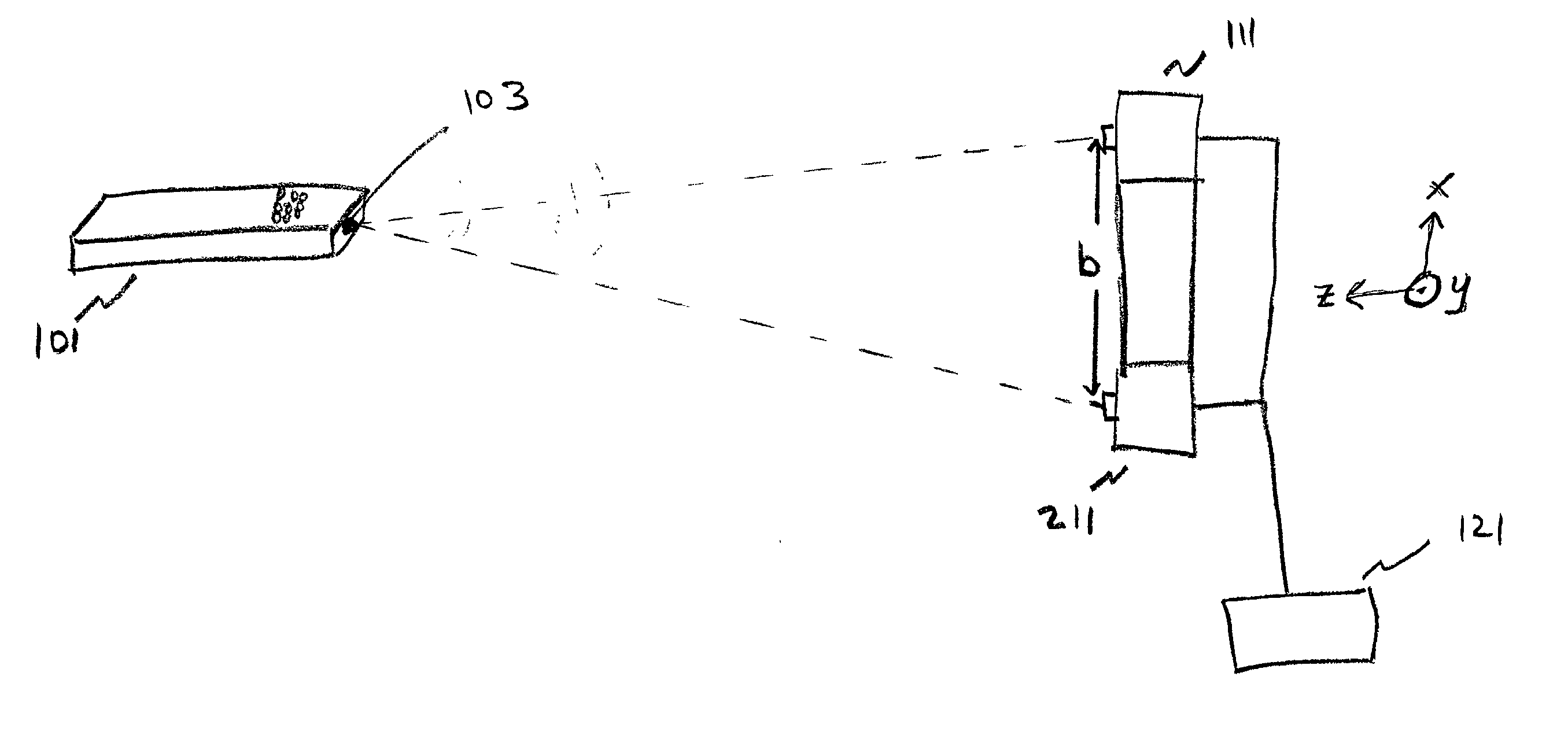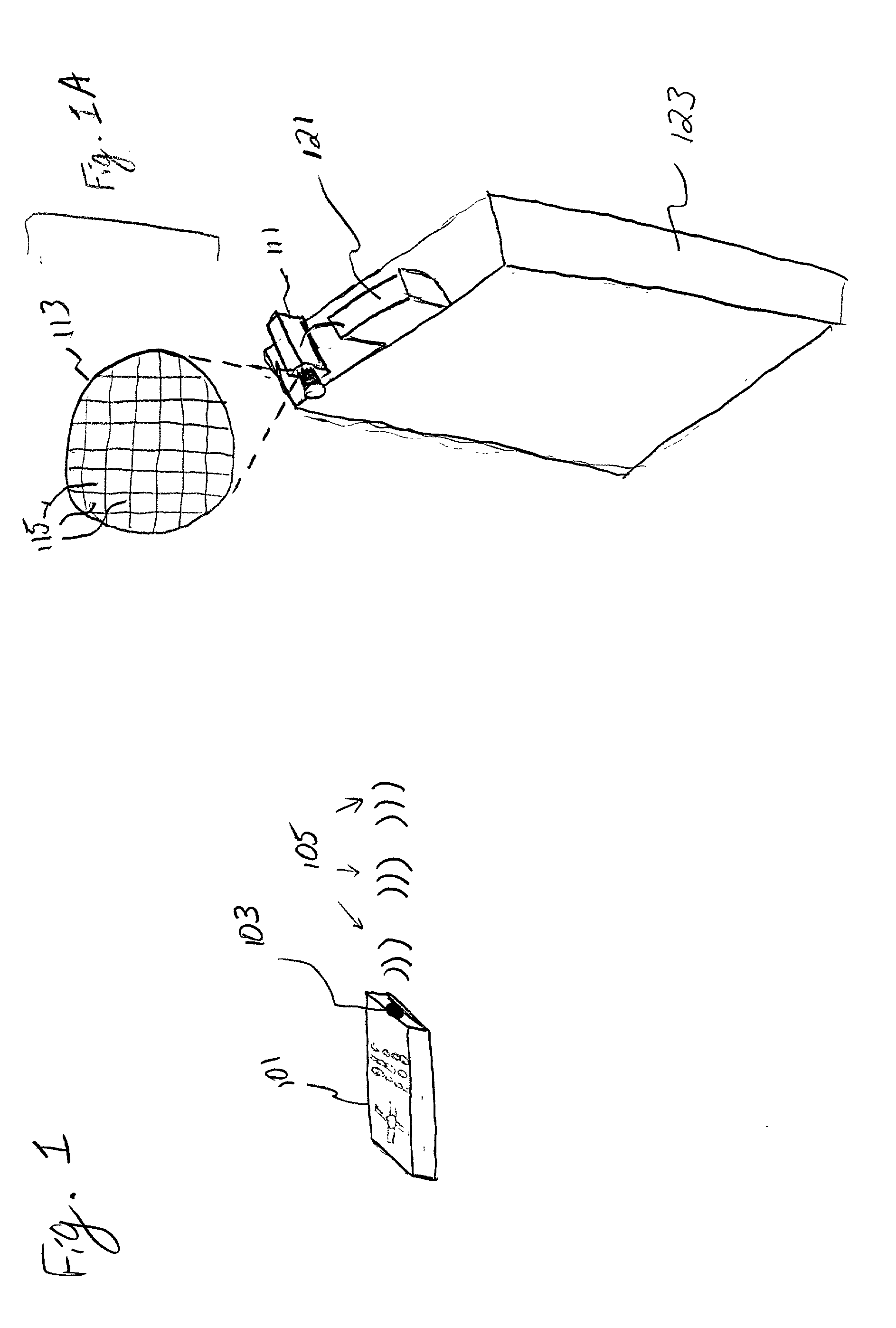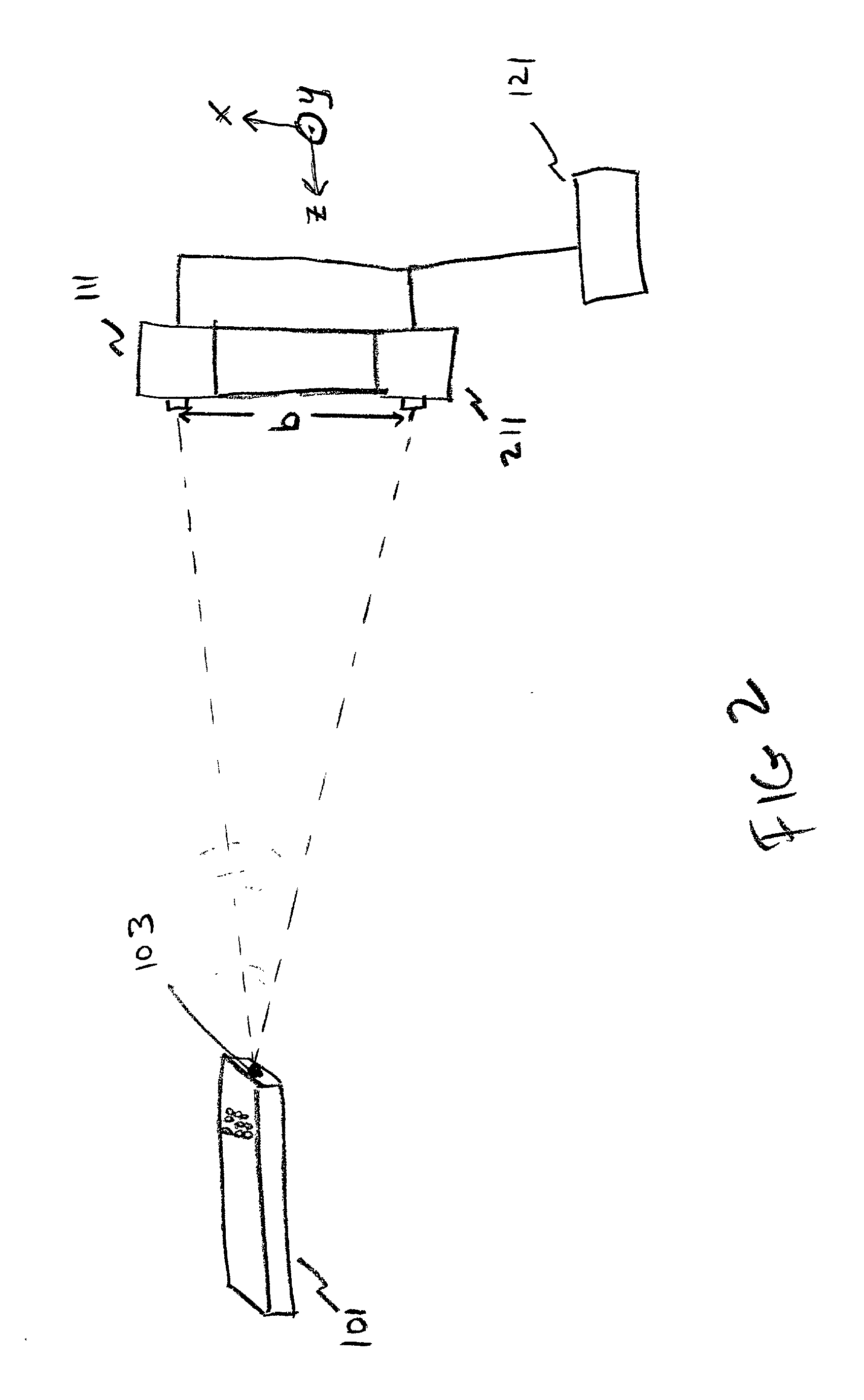Computer vision-based wireless pointing system
a wireless pointing and computer vision technology, applied in the field of wireless pointing systems, can solve the problems of reducing accuracy of rotational devices, affecting the accuracy of gyroscopic devices, and limiting the specific wavelength selected for transmission and detection,
- Summary
- Abstract
- Description
- Claims
- Application Information
AI Technical Summary
Benefits of technology
Problems solved by technology
Method used
Image
Examples
Embodiment Construction
[0024] Preferred embodiments of the present invention will be described herein below with reference to the accompanying drawings. In the following description, well-known functions or constructions are not described in detail since they would obscure the invention in unnecessary detail.
[0025] FIG. 1 is a representative view of a system according to an embodiment of the present invention. As shown in FIG. 1, hand-held device 101 is depicted as a standard remote control typically associated with a VCR or television. Incorporated into the hand-held device 101 is a control unit that causes an LED 103 to flash at a preset frequency. The starting of the flashing can be controlled by any switching method, for example, an on / off switch, a motion switch, or the device can be sensitive to user contact and the LED 103 can turn on when the user touches or picks up the device. Any other on / off method can be used, and the examples described herein are not meant to be restrictive.
[0026] After the ...
PUM
 Login to View More
Login to View More Abstract
Description
Claims
Application Information
 Login to View More
Login to View More - R&D
- Intellectual Property
- Life Sciences
- Materials
- Tech Scout
- Unparalleled Data Quality
- Higher Quality Content
- 60% Fewer Hallucinations
Browse by: Latest US Patents, China's latest patents, Technical Efficacy Thesaurus, Application Domain, Technology Topic, Popular Technical Reports.
© 2025 PatSnap. All rights reserved.Legal|Privacy policy|Modern Slavery Act Transparency Statement|Sitemap|About US| Contact US: help@patsnap.com



